Eat Only the Freshest by Planting
Beetroot Yourself
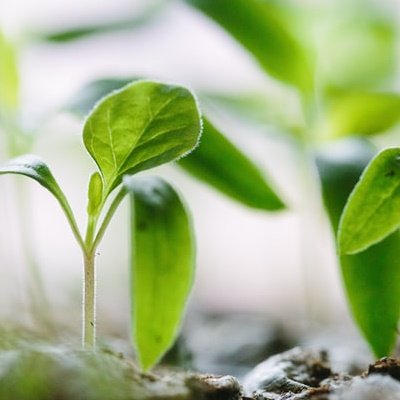
Enjoy planting beetroot all year round by growing this vegetable in your home garden - a very popular plant. Easy to grow... pick them tender and fresh from your garden any time between June and late autumn. Continue munching into them by taking them from store until March. If you'r a pickler then eating them pickled from March to June completes the year.
A slow starter, growth accelerates once the seedlings begin getting established - avoid any check to their growth and harvest before they get too large and woody... remember those sad examples bought from your local shopping outlet. Just follow the directions below and you'll be successful.
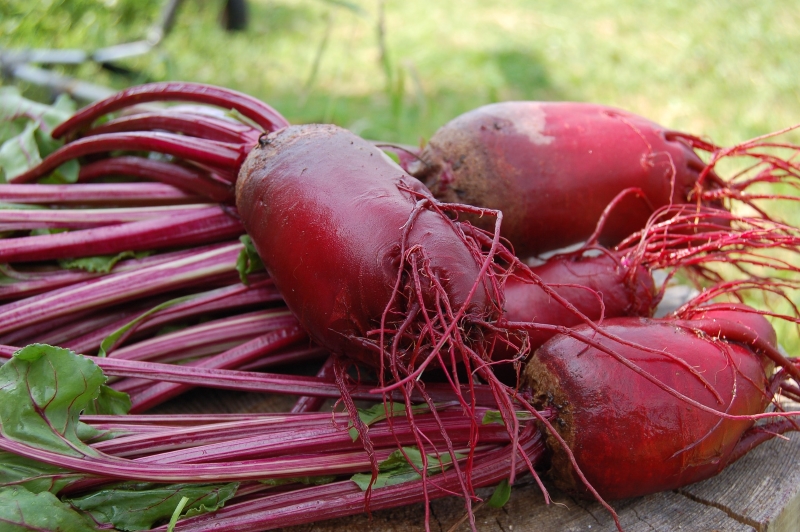
Soil Details For Planting Beetroot
Like other root vegetables, don't grow your beet root in recently manured ground - it produces mis-shapen roots. When planting beet root choose a site that was prepared for another crop like peas, beans or celery. A light sandy soil is preferable. Dig your plot in the autumn... frosts will break the clods of earth down and heavier soils will still be ok.
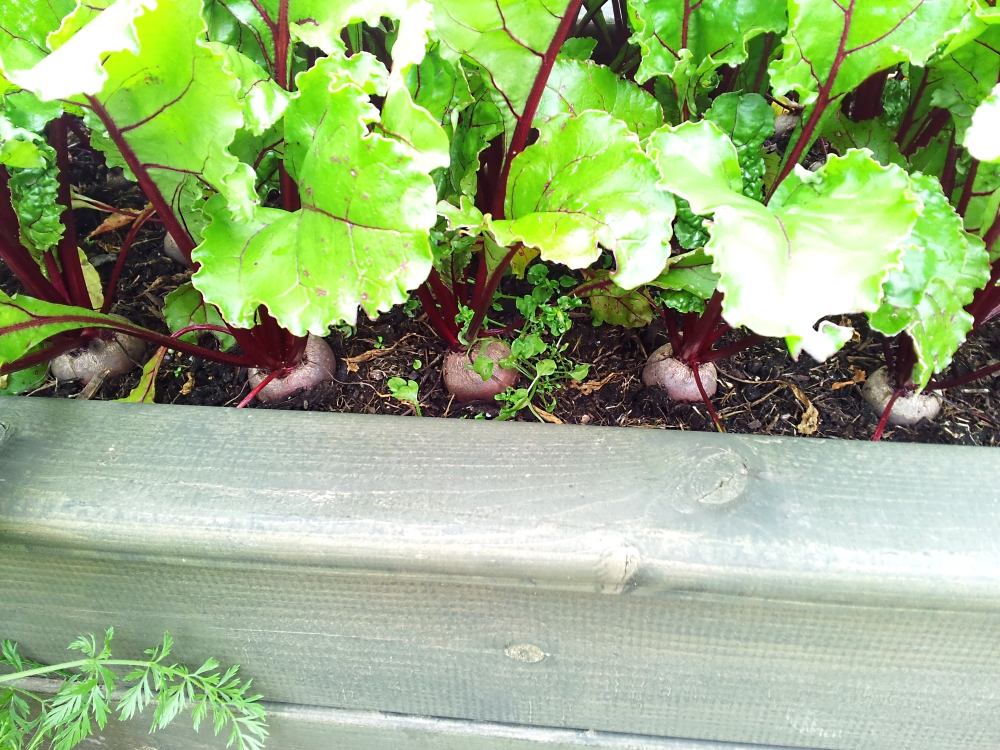
Did-You-Know The surface of soil particles in moist ground are covered with a thin film of water (water moves through soil by capillary motion) and when it becomes frozen by frost it expands by 7%. This pushes the particles away from each other and when the thaw arrives a nice friable soil remains... so let the frosts take the strain.
I dig-ress... so choose a sunny spot, some shade will be tolerated, a pH of 6.0-7.0 is fine but if you know your soil is too acid dig in some lime. Remove perennial weeds and large stones as these also can cause the roots to become mis-shapen.
In the spring prepare your bed for planting beetroot by raking in a general fertilizer. This will be easy - remember- you dug it in the autumn and frosts did the rest!
Planting Beetroot
Sow beetroot seed March to June. For early crops of small, delicious tender vegetables, planting beet root seed will have to be done under cloches in early March - sow a bolt-resistant variety like Boltardy. Beet root seed are clusters of seeds bunched together... this makes it easier to sow them individually, 2-3 clusters per station. Saves on the tedious job of thinning out along the row. Aid germination by soaking seed overnight before sowing.
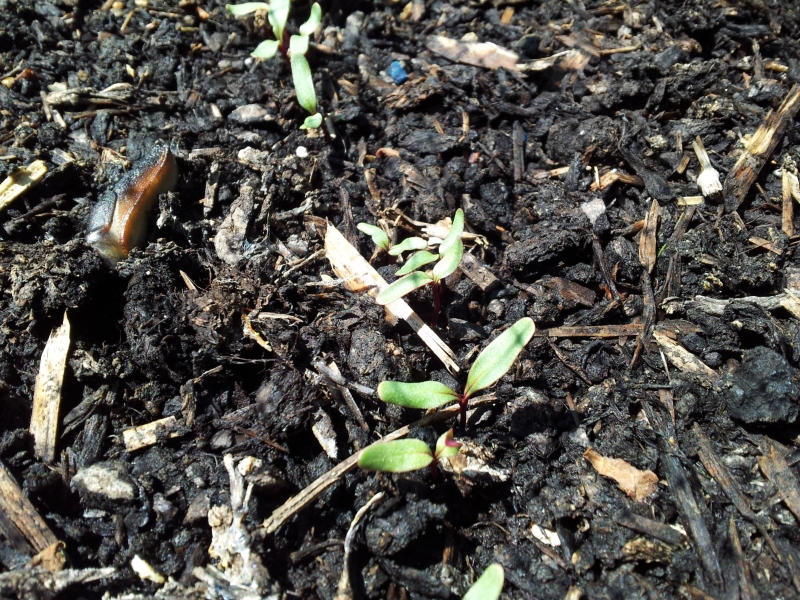
Use the corner of a hoe to form a groove (drill) in the prepared bed about 2cm(1") deep. Sow the beetroot seeds 10cm(4") apart in the drill - remember above? - less thinning out required. Space rows 30cm(12") apart. Remove all but the strongest seedling when thinning out.
Main sowing period is late March in the south of England and early April in the North. Prevent a glut when planting beet root by sowing your seed in stages, a small batch at a time every couple of weeks.
When planting beetroot for winter storage sow in late May or June - earlier sowing's can become too woody at pulling time in October. For late autumn beet root the favorite choice is Detroit2. Detroit2-Little Ball is also excellent as a late sowing variety... produces small roots which are excellent for pickling and bottling.
Caring For Your Beetroot After Planting
Carrying out the following will ensure your beetroot plants are kept growing in good condition:
- Thin out seedlings when 2-3cm(1"-2") high to a single plant - thinned seedlings will not transplant successfully.
- Protect from birds - see below under pest control.
- Hoe carefully to keep weeds down while seedlings are young - don't damage the root as it will 'bleed'. As the beet root grows the foliage will get more dense and will suppress the weeds.
- A mulch of peat can be applied to help keep weeds down - it also conserves moisture speeding the growth of beetroot making the vegetable more tender - never mulch over dry soil.
- Keep the soil around these vegetables moist - water regularly in dry weather. Beetroot tend to seed or bolt prematurely if not watered in warm weather.
Woodyness and low yields also result from letting the soil get too dry after planting beet root. A sudden return to watering can cause the plant roots to split - repeat...water at regular intervals.
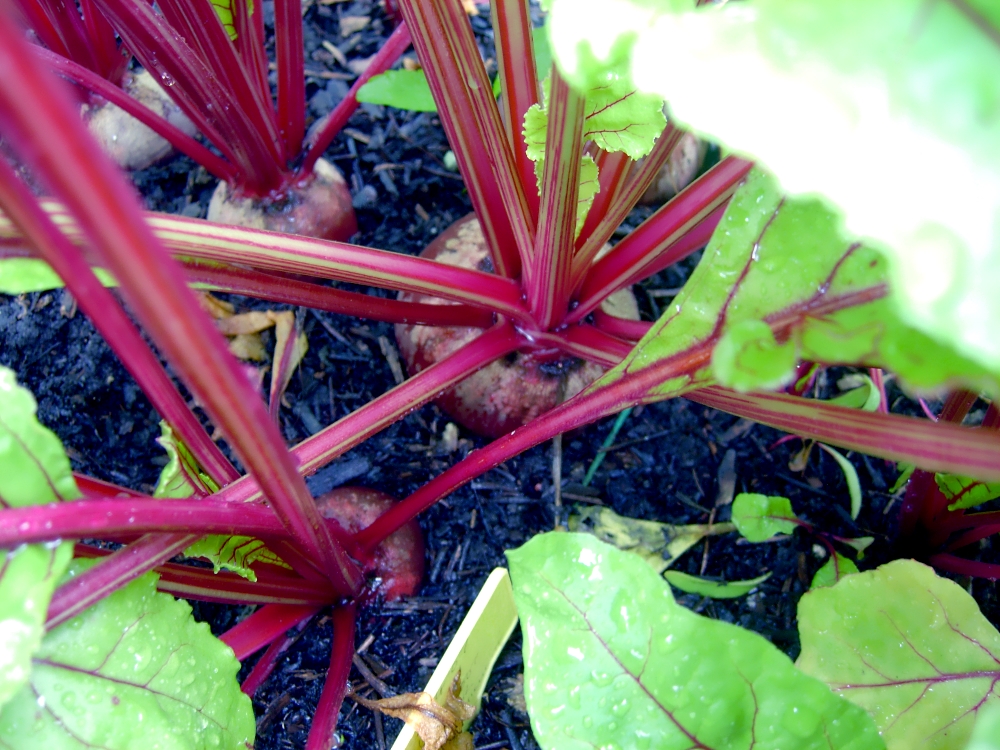
Pest Control For Your Growing Beetroot
This vegetable is usually remarkably free from pests and diseases but there are a few that you should be on the look out for.
Protect from birds at the seedling stage or they will have the young tender leaves for breakfast whilst you are still snoozzzzing.
Mangold Leaf or Leaf Miner is a small white grub which burrows inside the leaves creating tunnels which turn into blisters. Most serious in young plants the leaves turn brown and growth is stunted - attack usually occurs from May onwards. Treat by removing affected leaves at first sign of attack and destroy them.
Bolting is were plants sometimes run to seed before roots have developed. There are a number of reasons why this may occur:
1. dry soil
2. lack of organic matter
3. sowing seed to early
4. waiting to long to thin seedlings out
There are resistant varieties you may want to try - Boltardy being the best known and can be planted as early as weather permits, it also has excellent taste and storing qualities... right into the following spring.
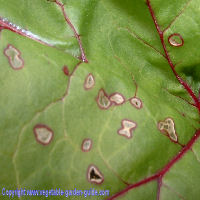
Leaf Spot appears as brown spots on leaves after planting beet root. The paler central area of the spot can drop out. The effect on the crop yield is not serious even though the leaves look badly disfigured. Remove seriously diseased leaves and destroy.
Practising crop rotation will help prevent this disease, apply a balanced fertilizer a couple of weeks before sowing.
Aphids cause leaves to curl and the new shoots to become distorted possibly resulting in less root yield. Try containing aphid attacks by encouraging other insects such as hoverflies and ladybirds which feed on them.
Harvesting Your Beetroot
|
Very straightforward. Just lift the plants as you require them - the globe varieties should be no bigger than a tennis ball... the smaller the more sweet and succulent they are. If you have grown some roots for storage these should be lifted on a dry day at the end of September into October. Be extra careful at this stage to ensure successful storage - you've put in a lot of effort to get here. Pull them by hand if possible, be very care full using a fork if you have grown the long varieties - place the fork into the soil away from the plant and loosen the soil without damaging the beet root. Remove the foliage to about 50mm(2") above the crown of the beetroot - twist the foliage off... do not cut with a knife as this will cause the stalks to bleed. Reject any damaged beet roots or any vegetables that have been attacked by pests. Damaged beet roots will rot in storage. Do not bruise by careless handling! |
Store your beetroots in a stout box between layers of dry peat - don't let any roots touch. Place the box in a dry, frost free place... they should keep until early spring.





